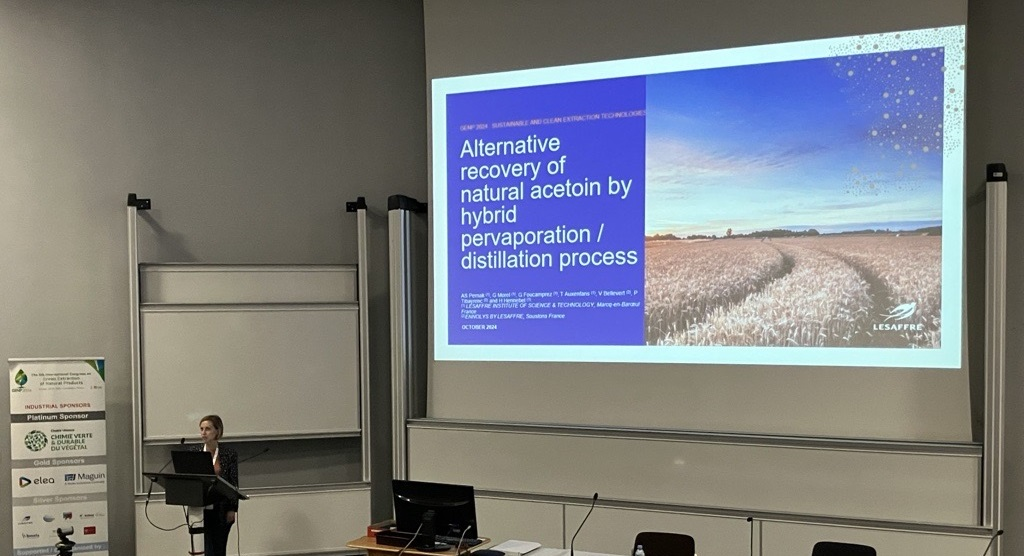Acetoin (3-Hydroxybutanone) is a molecule present in trace amounts in many foods, such as grapes, bananas, honey and coffee. It’s also one of the molecules that gives butter its characteristic flavor, which is why it’s frequently used in dairy and bakery products. Other sectors such as cosmetics, perfumery and detergents also use this high value-added molecule, notably as a chemical precursor.
The current supply of commercial acetoin is largely derived from chemical synthesis using fossil raw materials. With fossil resources becoming increasingly scarce, considerable efforts have been made to develop natural acetoin production using biological processes involving micro-organisms. However, productivity and product quality are generally insufficient.
The team at LIST’s Dowstream Process Design Center of Excellence therefore set itself the challenge of developing a competitive approach to acetoin production from fermentation, in order to meet regulatory requirements (purity > 95% for the food industry) and avoid any use of organic solvents for product recovery, particularly in a context of sustainability and “natural” labeling.
Proven technical feasibility
At the 5ème International Congress on “Green Extraction of Natural Products” organized by Compiègne University of Technology (UTC) last October, Anne-Sophie Pernak presented an alternative solvent-free process for recovering acetoin from fermentation media. “We demonstrated that, under optimum temperature and vacuum conditions, pervaporation(1) using a hydrophilic membrane produces a concentrated solution with an acetoin purity of at least 70%. Combined with a distillation step, a final product with a purity of over 98% was obtained, thus validating the proof of concept,” explains Anne-Sophie Pernak. Upstream of the process, a nanofiltration pre-treatment step for the fermentation medium ensured greater stability in the feed to the pervaporation unit.
The robustness of this patented process was evaluated on a pilot scale using several fermentation batches at the Ennolys by Lesaffre business unit.
“We are proud to have proved the technical feasibility of obtaining a natural quality of acetoin with exceptional purity. Today, however, this process remains uncompetitive compared with chemical synthesis, particularly in terms of overall extraction yield and the longevity of the membranes used, but further studies are already underway to meet these challenges”, concludes Anne-Sophie Pernak.
(1) Pervaporation is a process that combines membrane separation and vacuum evaporation.


